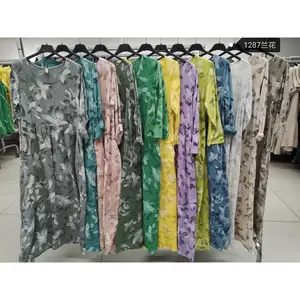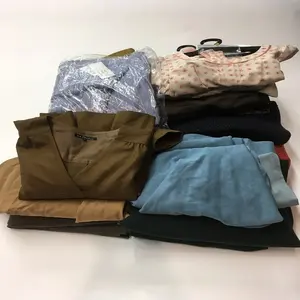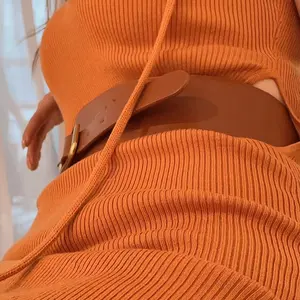What is Traditional Indian Attire
Traditional Indian attire is a vibrant expression of Indian cultural heritage, embodying centuries of tradition, artistry, and cultural significance. These garments are not just clothing but are revered as a symbol of India's rich cultural tapestry and history. Traditional Indian attire encompasses a wide array of clothing items, each with its own unique characteristics, often varying in fabric, design, and purpose. This category of clothing is not only for everyday wear but also holds immense cultural significance, often worn on special occasions, religious ceremonies, and festivals.
The individuals who wear traditional Indian attire include people from India and those who appreciate the culture's aesthetic and significance. The versatility of these garments allows them to be worn by all age groups, from children to adults, and on various occasions, from casual outings to elaborate weddings. Traditional Indian attire operates on principles of versatility, comfort, and respect for cultural norms and traditions.
The production and design of traditional Indian attire take into account the diverse climates and cultural preferences within India. This is why one can find traditional Indian attire in various fabric types and styles, such as lightweight materials for hot climates or rich, heavy fabrics for colder regions. The aesthetic appeal of these garments is often enhanced by intricate patterns, embroidery, and decorative elements that showcase the artistry and craftsmanship of Indian designers and artisans.
Types of Traditional Indian Attire
Traditional Indian attire comes in a multitude of forms, each with its unique history and purpose. Here are some examples:
-
Kurta / Kurti: The kurta is a long tunic that often reaches to the knees or lower. It is paired with a set of trousers or a skirt known as a salwar to create a coordinated look. Kurtas are commonly worn by both men and women and are favored for their ease of wear and comfort.
-
Saree: A saree is an unstitched length of fabric that is draped over the body, typically with one end pleated over the shoulder and the other end tucked into the waist. It is often made from materials like silk, cotton, or chiffon and is a staple in traditional Indian women's wear.
-
Salwar Kameez: This classic combination consists of a long tunic-style top paired with a pair of tapered trousers. Salwar kameez is versatile and can range from casual to formal depending on the fabric and embellishments.
-
Lehenga: A lehenga is a full skirt that typically features heavy embroidery or embellishment. It is often part of a bridal or festive ensemble and is designed to make a statement.
-
Sherwani: Resembling a long tunic or kurta, sherwanis are often paired with a form-fitting churidar pant. They are commonly worn by men during weddings or other formal events.
How to choose Traditional Indian Attire
Choosing the right traditional Indian attire is crucial for businesses that cater to a specific demographic or market segment. When selecting these outfits for resale or commercial use, it's important to consider factors such as material quality, design intricacy, size availability, and target age group.
Material quality plays a significant role in the longevity and aesthetic appeal of these garments. Fabrics like chiffon, georgette, or silk can offer a luxurious feel while materials such as cotton or linen provide comfort for casual wear. The choice of material should also consider climate conditions; for instance, woolen shawls might be more appropriate for regions with cooler weather.
Design complexity varies widely among traditional Indian attires. Some may feature simple designs suitable for everyday use while others might showcase elaborate patterns and embellishments appropriate for grand occasions. It's essential to curate a selection that caters to different customer needs in terms of design styles.
Size availability should accommodate a broad range of body types; offering plus sizes can expand the customer base. Suppliers on Alibaba.com often provide detailed size charts that can help in making informed decisions about which sizes to stock.
Lastly, consider the age group that will be wearing these garments. Designs may need to be adjusted based on whether they're intended for babies or adults, ensuring a comprehensive range that appeals to all potential customers.
About Traditional Indian Attire on Alibaba.com
Alibaba.com stands as a global marketplace that connects businesses with a vast selection of Traditional Indian Attire suppliers. Offering an extensive variety of styles that range from classic to contemporary, Alibaba.com is an ideal platform for sourcing authentic garments that resonate with cultural heritage while meeting modern fashion sensibilities. Whether businesses seek elegant sarees for bridal boutiques or comfortable kurtas for casual wear stores, Alibaba.com provides access to suppliers who can meet diverse requirements.
Alibaba.com offers a user-friendly interface that simplifies the process of finding the perfect traditional Indian attire. With features that allow buyers to communicate with suppliers in their local language and mobile accessibility for on-the-go transactions, Alibaba.com ensures that purchasing is seamless and convenient. Moreover, services like Trade Assurance provide buyers with confidence by securing payments until order fulfillment is confirmed.
The platform's commitment to facilitating easy international trade is evident in its comprehensive supplier verification process which ensures that businesses receive quality products from reliable sources. By choosing Alibaba.com for sourcing Traditional Indian Attire, businesses not only enrich their offerings but also become part of a global trade community that values quality, diversity in selection, and customer satisfaction.
Common FAQs for Traditional Indian Attire
What defines traditional Indian attire?
Traditional Indian attire typically includes a variety of garments that can vary by region, such as a dhoti, kurta, or lungi, each with its own distinct style and cultural significance.
How do I select the right size range for my customer base?
Consider the demographics of your target market—this will help you determine the most common sizes to stock. A range of sizes should be available to cater to a wider customer base.
What factors should I consider when choosing traditional Indian attire for my business?
Assess the quality of the materials, the authenticity of the design, and the cultural significance of the attire to ensure it aligns with your business values and customer expectations.
How can I ensure the traditional Indian attire I purchase is authentic?
Authenticity can be ensured by researching the history of the attire, such as regional design differences, material sourcing, and craftsmanship. Suppliers may provide information that can help determine the authenticity.
Are there variations in traditional Indian attire that cater to different occasions?
Yes, traditional Indian attire can vary widely in formality and design, with detailed embroideries and luxurious fabrics often reserved for special occasions like weddings and religious ceremonies.
Can traditional Indian attire be customized for my business?
Many suppliers on platforms like Alibaba.com offer customization options such as OEM, ODM, and make-to-order services that can help tailor traditional Indian attire to your business's specific needs.
What materials are commonly used in traditional Indian attire?
Traditional Indian attire is often made from natural fibers like cotton, silk, linen, and wool to ensure comfort and authenticity.
Is it possible to find eco-friendly or sustainable options in traditional Indian attire?
Yes, some suppliers may offer eco-friendly options such as organic cotton or sustainable materials that cater to environmentally conscious consumers.
How does the back design of a traditional Indian attire affect its appeal?
The back design of a traditional Indian attire can greatly influence its appeal, as it is often highlighted in the design with patterns and embroidery.
What are some common technics used in creating traditional Indian attire?
Common technics include hand weaving, embroidery, digital print, and handmade decoration. These techniques contribute to the unique beauty and craftsmanship of the attire.
How does the style of traditional Indian attire vary across different regions?
Style can vary significantly; for example, a kurta from North India might differ from a South Indian dhoti. It's essential to understand the cultural significance behind each style.












































 浙公网安备 33010002000092号
浙公网安备 33010002000092号 浙B2-20120091-4
浙B2-20120091-4